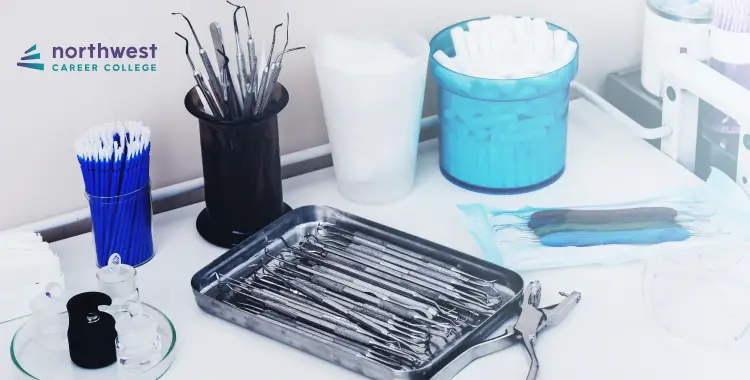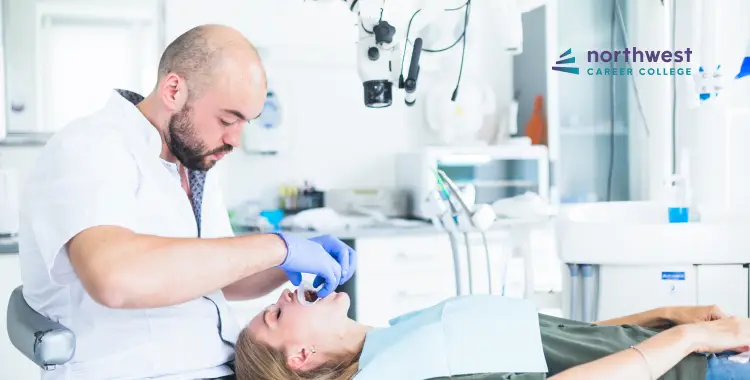Common Problems in Chairside Dental Assisting and How They Can Be Overcome
- November 4, 2025
- 1.0k views
- 3 min read
You’d like to provide excellent patient care, but working as a dental assistant isn’t always that easy on some days. Long periods spent standing, hectic schedules, and anxious patients can overwhelm your day. Even routine procedures can become complicated if they don’t proceed as expected.
Each dental practice relies on fast-thinking, calm chairside assistants to keep things moving. That’s why knowing how to solve problems ahead of time is essential. In this blog, we will take you through some of the most frequent issues faced in chairside assisting and how you can solve them confidently.

Table of Contents
Remain Calm During Challenging Procedures
Dental procedures are quick and high-pressure. They can be root canals or emergency extractions, but chairside assistants must think and react quickly. Some students struggle to keep up. To help you in this scenario, prepare your tray before the patient arrives. Double-check your supplies and equipment so you are not rushing during the procedure.
Talking to Nervous Patients
Most individuals fear the dentist. The patients might be nervous, anxious, or in agony. As the first person they meet in the treatment area, the dental assistant plays a massive role in soothing the patients’ fears.
Smile, look them in the eye, and listen. Being a soothing and friendly presence often alleviates a nervous patient’s fears and makes them feel secure.
Infection Control
Infection control is a priority in any dental office. It includes strict cleaning and sterilizing procedures and protective gear. It is a lot to remember at first, though.
Make a checklist. Place a laminated card or stickies in your workstation to remind you of the cleaning and sterilizing process steps. Through repetition, it will become second nature.
Establish a routine. For instance, always follow the same order when cleaning your operatory. Working in the same manner every time helps minimize errors and save time.
Efficient Use of Dental Instruments
One of the top chairside skills is passing instruments rapidly and accurately, but it’s not always easy, particularly when the dentist is focused and rushing.
Memorize the “clock positions.” Departments utilize a system in which instruments and individuals are put in positions similar to clock numbers on a clock face. Being able to recall where everything goes makes passing instruments easier.
Some procedures require you to use your non-dominant hand. Training both hands makes you more flexible and proficient in procedures.
Working in a Team
Dental assistants do not work in isolation. They must collaborate closely with dentists, hygienists, office employees, and other assistants. Miscommunication will result in errors or disruptions.
Use hand cues or abbreviated code words with your dentist to ensure you are in sync. For instance, a nod can indicate “ready,” or a shoulder tap might indicate “help.”
Always ask for clarification if you are unsure. Never fear asking questions or checking instructions. It’s safer to double-check rather than assume.
Enroll Now — Complete in Just 9 Months!
Dental Assistants are essential to the success of any dental office. Enrolling in our Dental Assistant Program is an excellent way to start your journey. It will provide you with extensive knowledge, advanced education, and transferable soft skills for a high-growth career.
Northwest Career College stands out as the best in the area. We provide training under experienced dental professionals in a spacious eight-operatory lab and offer online options. Our curriculum includes advanced digital X-ray instruction and hands-on externships, ensuring that our Dental Assistant program stays at the forefront of the industry.
Take the next step with Northwest Career College and begin your journey toward a fulfilling career in dentistry today!





